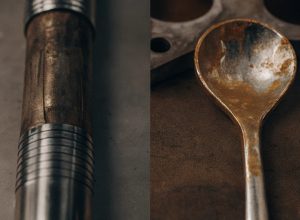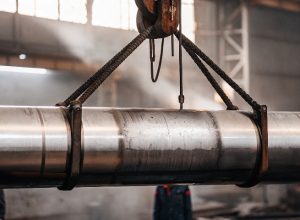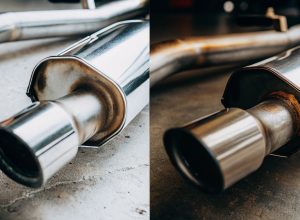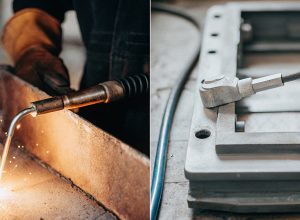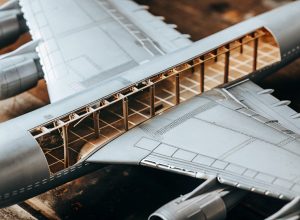Yes, grade 5 titanium is indeed the same as Ti-6Al-4V. This powerful alloy, consisting of approximately 90% titanium, 6% aluminum, and 4% vanadium, is a cornerstone in the world of advanced materials. Often dubbed the “workhorse” of titanium alloys, Ti-6Al-4V dominates over 50% of the global titanium market, playing a pivotal role in industries such as aerospace, medical, and automotive. At Shaanxi Titonest Metal Co., Ltd., we pride ourselves on delivering top-tier titanium products, including grade 5 titanium, to meet the diverse demands of our worldwide clientele.
1. Introduction
1.1 Why Titanium Matters
Titanium has transformed modern engineering with its exceptional blend of strength, lightweight nature, and corrosion resistance. Among its many alloys, grade 5 titanium—also known as Ti-6Al-4V—stands out as the most popular and widely utilized. But a common question arises: is grade 5 titanium truly the same as 6Al 4V? The answer is unequivocally yes. These terms describe the same alloy, distinguished by its composition and remarkable versatility. This guide dives deep into the world of grade 5 titanium, exploring its properties, applications, and significance across industries.
1.2 What to Expect in This Guide
Whether you’re an engineer seeking technical insights, a procurement specialist evaluating materials, or simply a curious reader, this article offers a comprehensive look at Ti-6Al-4V. From its defining characteristics to its real-world applications, we’ll cover it all. At Shaanxi Titonest Metal Co., Ltd., we’re committed to providing not just products but also knowledge to empower our customers. Let’s begin by unraveling what makes this alloy so special.
2. What is Grade 5 Titanium?
2.1 Definition and Composition
Grade 5 titanium, or Ti-6Al-4V, is classified as an alpha-beta titanium alloy. This designation indicates it contains both alpha stabilizers (like aluminum) and beta stabilizers (like vanadium), resulting in a balanced mix of strength, toughness, and ductility. Chemically, it comprises about 90% titanium, 6% aluminum, and 4% vanadium, with trace amounts of iron and oxygen. The “6Al-4V” label reflects its elemental makeup, while “grade 5” aligns with the ASTM classification system, such as ASTM B348. Despite the dual naming, they refer to the identical material—a fact that underscores its prominence.
| ASTM B348 | C | N | O | H | Fe | Al | V | Ti | UTS (Mpa)min. | YS 0.2% (Mpa) min. |
| Grade 5 | 0.08 | 0.05 | 0.2 | 0.015 | 0.4 | 5.5-6.75 | 3.5-4.5 | Balance | 895 | 828 |
2.2 The “Workhorse” Reputation
Why is Ti-6Al-4V called the “workhorse” of titanium alloys? Industry expert Dr. Emily Carter explains, “Its adaptability across high-stakes applications, from aerospace to medical devices, sets it apart. Ti-6Al-4V delivers where others falter.” This alloy’s dominance is evident in its market share, accounting for over half of global titanium usage. Available in forms like titanium bars and sheets from Shaanxi Titonest Metal Co., Ltd., it meets the rigorous demands of diverse sectors with ease.
3. Key Properties of Grade 5 Titanium
3.1 High Strength-to-Weight Ratio
One of the standout features of grade 5 titanium is its exceptional strength-to-weight ratio. Boasting a tensile strength of approximately 1170 MPa and a density of just 4.43 g/cc, it rivals the strength of some steels while being nearly 40% lighter. This makes it a go-to choice for industries like aerospace, where every ounce matters. Components crafted from titanium forgings exemplify how this property enhances performance without adding unnecessary weight.
3.2 Superior Corrosion Resistance
Ti-6Al-4V excels in harsh environments thanks to its outstanding corrosion resistance. A naturally forming oxide layer shields the alloy from degradation, making it ideal for marine and chemical processing applications. Whether it’s titanium tubes in seawater or industrial fittings, this property ensures longevity and reliability, reducing maintenance costs over time. If you are interested in GR.5 titanium tubes, could refer the post Is It Hard to Produce Grade 5 Titanium Tubes?
3.3 Heat Treatability and Biocompatibility
Another advantage is its heat-treatable nature, allowing manufacturers to fine-tune its strength and hardness for specific uses. Additionally, in its ELI (Extra Low Interstitial) form, grade 5 titanium is biocompatible, making it safe for medical implants. Products like titanium wire from Shaanxi Titonest Metal Co., Ltd. support innovations in both engineering and healthcare, showcasing the alloy’s versatility.
4. Applications of Grade 5 Titanium
4.1 Aerospace Industry
In aerospace, grade 5 titanium is indispensable. Its lightweight strength powers jet engines, airframes, and landing gear. With Ti-6Al-4V comprising roughly 50% of global titanium use—75% of which feeds aerospace—this alloy is a skyward staple. Our titanium fasteners ensure aircraft components stay secure under extreme conditions, reflecting its critical role.
4.2 Medical and Beyond
The medical field leverages Ti-6Al-4V for implants and surgical tools, thanks to its biocompatibility and durability. From hip replacements to dental fixtures, the ELI variant shines. Beyond medicine, automotive and marine sectors use titanium coils and other forms to boost performance and resist corrosion, proving its broad applicability.
This is Part 1 of our guide, laying the groundwork for understanding grade 5 titanium. Stay tuned for Part 2, where we’ll explore market trends, comparisons, and more. For premium titanium solutions, visit Shaanxi Titonest Metal Co., Ltd..
5. Standards and Specifications
6AL-4V Titanium, commonly referred to as Grade 5 titanium, adheres to various industry standards and specifications that govern its manufacturing and application in multiple sectors, particularly in aerospace and medical industries.
5.1 ASTM Specifications
ASTM B348
This specification covers Gr.5 titanium in titanium and titanium alloy bars and billets.
5.2 AMS Specifications
AMS 4911
This specification covers 6AL-4V titanium in the form of sheet, strip, and plate, making it a crucial standard for applications in the aerospace industry
AMS 4928
Applicable to bars, wire, forgings, and rings, AMS 4928 guarantees the mechanical properties essential for fasteners and structural components in aerospace applications
AM6931
Although less commonly referenced, AM6931 is important for specific industrial applications of 6AL-4V titanium, ensuring compliance with specific performance criteria
5.3 Military Standards
MILT 9046
This standard pertains to titanium and titanium alloy sheet, strip, and plate, ensuring that military aerospace components meet stringent requirements
MILT 9047
Similar to MILT 9046, this specification covers titanium and titanium alloy bars, forgings, and similar products used in military aircraft applications
6. Additional Considerations
The pricing and availability of 6AL-4V titanium are influenced by market demand across aerospace, medical, and defense industries, as well as manufacturing complexities associated with meeting these specifications. Factors such as global economic conditions and trade policies also play a significant role in the cost of titanium products. As a result, the specifications not only dictate the performance and quality of the material but also its commercial viability in various applications.
7. Misconceptions
One of the prevalent misconceptions regarding titanium grades is the belief that Grade 5 titanium and Ti-6Al-4V are different materials. In reality, Grade 5 titanium is equivalent to Ti-6Al-4V, as both designations refer to the same alloy composition consisting of 90% titanium, 6% aluminum, and 4% vanadium.This confusion often arises due to the use of different naming conventions across industries, but technically, there is no difference in the material properties or characteristics between the two. Additionally, some people may underestimate the challenges associated with machining Ti-6Al-4V due to its high strength and low thermal conductivity, which can lead to rapid tool wear and suboptimal surface finishes.The alloy’s poor machinability compared to conventional metals like steel further complicates its processing, requiring specific techniques and high-pressure cooling methods to maintain tool life and workpiece quality. Another common misunderstanding is the perception that all titanium alloys share similar properties. However, variations in chemical composition and processing methods can lead to significant differences in mechanical properties, such as strength, ductility, and corrosion resistance. Therefore, it is crucial to consider the specific grade and intended application when discussing titanium materials


